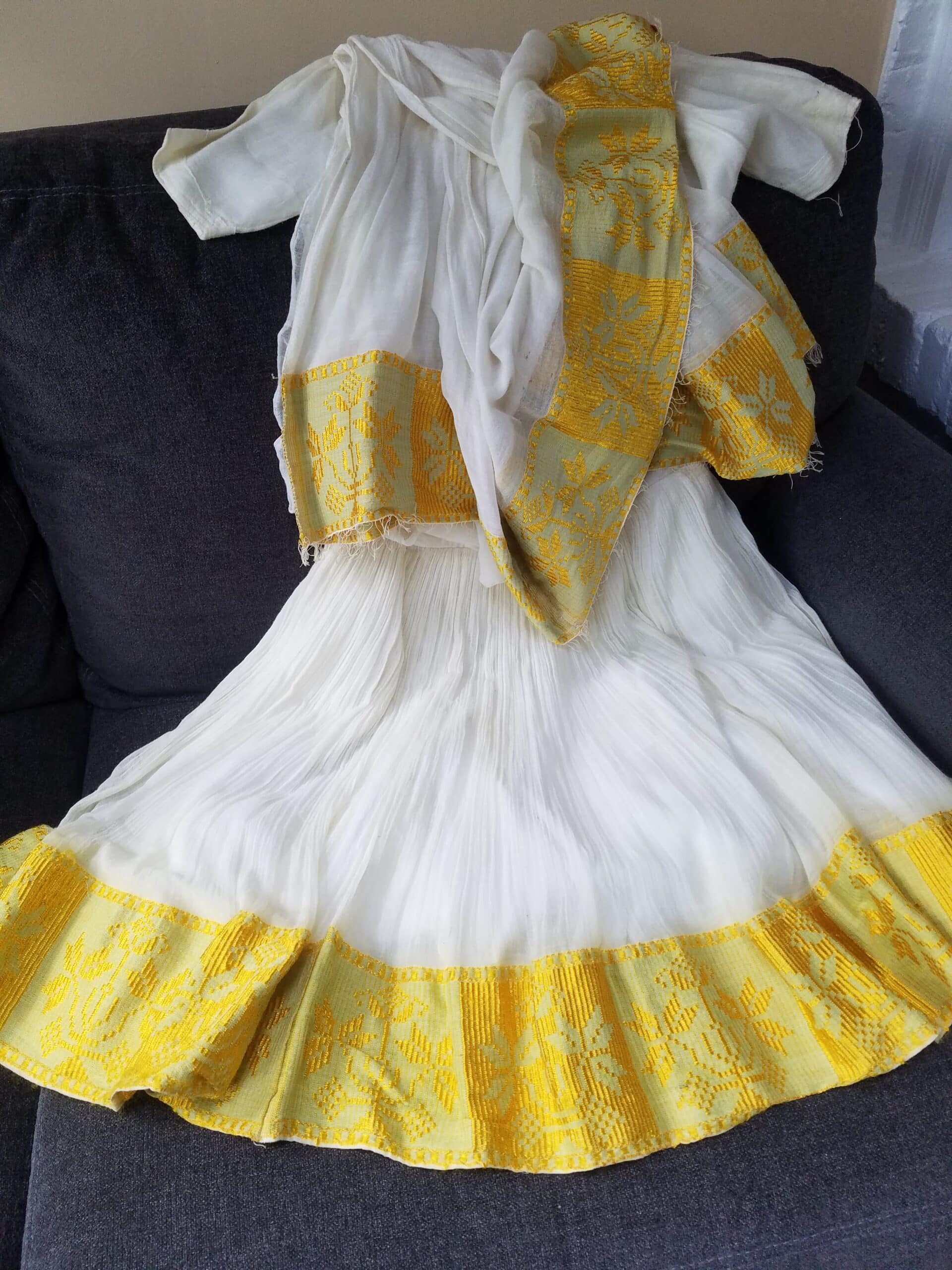Dresses worn by Ethiopian women impressed me with their beauty from the moment I saw them on my arrival as a Peace Corps volunteer in Addis Ababa, the capital city of Ethiopia in the early 1960s. I decided not long after I became a teacher at the secondary school in the town of Asbe Teferi that I would like to have one of the lovely dresses so I bought some fabric with gold borders. I found a tailor who made my traditional dress which I wore on special occasions throughout my two years as a volunteer.
The dress is called a Habesha Kemis and is worn by Ethiopian and Eritrean women. They believe it is the connection of women to their forebearers’ strengths, effortless beauty and femininity. It varies little in its form—but visitors to the Horn of Africa will discover wondrous variety in styles.
Ethiopia is a country in the Horn of Africa – an area named the horn because its shape is the shape of the horn of the black rhinoceros. Ethiopia is a rugged landlocked country split by the Great Rift Valley. It has over 80 different ethnic groups. Christianity and Islam are the principal religions observed.
It is Africa’s second most-populous nation and ranks tenth in cotton production. In certain regions, women are the primary pickers and spinners of cotton, whereas men do most of the weaving. The women card by hand and spin into yarn using a freestanding spindle known as an inzirt. The men use handlooms that are traditionally about 30 to 35 inches wide which means strips need to be sewn together. Weavers today use larger looms with larger width. It is estimated that there are 200,000 handloom weavers in Ethiopia today. Historian Richard Pankhurst writes that the first weavers were Muslims and Jews who traveled in nomadic bands and set up looms on verandas of noblemen. Today, woven cloth is Ethiopia’s leading non-agricultural export.
The garments consist of two basic parts: the ankle-length white dress (usually made of white cotton that is finely woven) and the soft cotton shawl, known as a shamma nitala. This fabric is made in long strips of cloth that are stitched together which may take 2-3 weeks. A thicker shawl, used for warmth in the chilly highlands, is called a gabbi. A kula is a thinner shawl used in warmer climates. Women and men both wear shammas, but they drape them differently depending on the social or religious occasion. The weight of the shawl, number of layers and thickness represents the status of the person in society. The way it is worn even indicates the mood, intention and attitude of the wearer. Men wear white cotton trousers like riding pants (British influence) with a long white shirt that drapes down to their knees.
These traditional garments become distinctive through the use of embroidered borders, between one or two inches wide, of colored silk designs called tibebe. The borders come in two variations: one of a single color (often gold) and the other of multiple colors and patterns. Dresses may also be decorated with embroidery, usually with crosses that reflect the deep Christian faith of most highland Ethiopians. Crosses are symbols of protection and believed to ward off evil and misfortune. Shiny gold thread for embroidery symbolizes richness and protection from evil.
Women also display their taste or ethnic origins by wearing special jewelry such as crosses or various hair styles.
At the end of our two years of volunteer service as teachers, the Ethiopian teachers thanked our five volunteers each with a gift of traditional clothing. I remember the thrill of receiving an additional dress and standing for a group photo with the Ethiopian teaching staff.
Now my husband and I live in Washington DC which is home to a large number of Ethiopian and Eritrean immigrants. We often attend special events with Ethiopians or we will see older Ethiopian women going to and from church and the market wearing their traditional clothing.
Just as Ethiopian mothers pass their spinning skills to their daughters, and fathers pass their weaving skills to their sons, we have encouraged our children—and now our grandchildren—to appreciate my Habesha Kemis.




